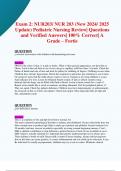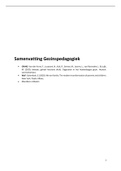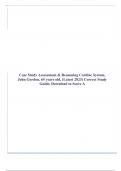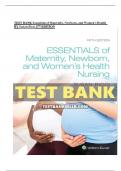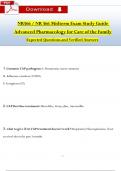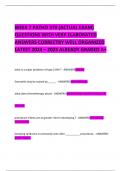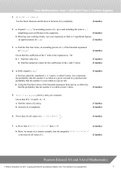Exam (elaborations)
Exam 2: NUR203/ NUR 203 (New 2024/ 2025 Update) Pediatric Nursing Review| Questions and Verified Answers| 100% Correct| A Grade – Fortis
- Course
- NUR 203/ NUR203 (NUR203)
- Institution
- Fortis College
Exam 2: NUR203/ NUR 203 (New 2024/ 2025 Update) Pediatric Nursing Review| Questions and Verified Answers| 100% Correct| A Grade – Fortis
[Show more]
